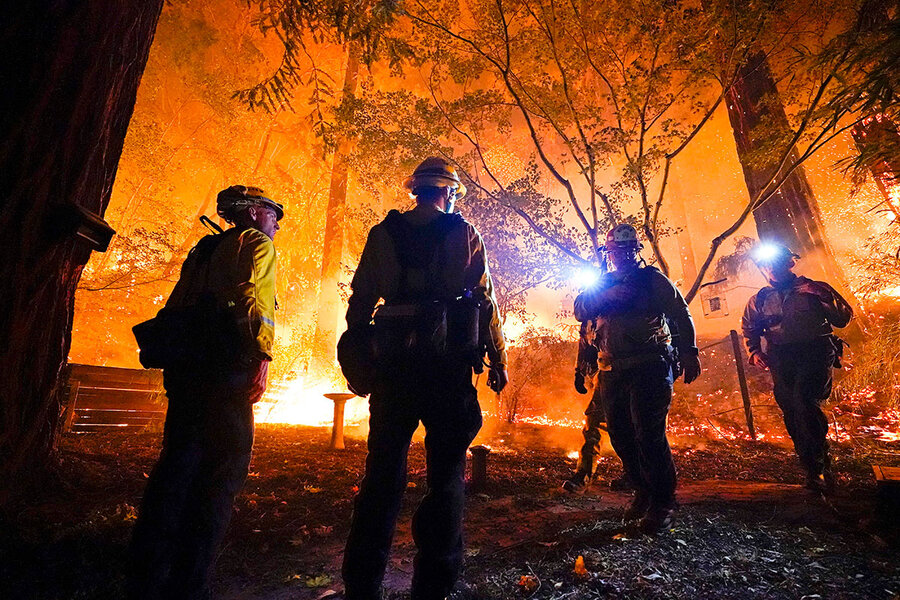California wildfires: Why this year is so intense
Loading...
With torrential lightning storms, hundreds of fires, and more than 120,000 people evacuated, California is confronting a once-in-a-generation fire season.
As COVID-19 hamstrings the state’s containment and evacuation plans, millions in the American West are watching a tragedy of circumstance. Environmental intrusion, decades of government inaction, and high winds have forced the situation out of control. Without adequate prevention, scientists predict the country’s wildfire seasons will grow in size and cost in the next 50 years.
But those predictions are far from certain. If there’s any hope from this year’s fire season, says Jessica Gardetto of the National Interagency Fire Center, it’s that it serves as a warning.
Why We Wrote This
Sometimes, extreme adversity can offer a learning experience. In the case of California's wildfires, for instance, this might mean learning to rethink our relationship with the natural world.
Ms. Gardetto says that the national number of acres burned so far is below the yearly average – less than 3 million compared with the typical 4 million to 6 million. Though large population centers are threatened, she says, the fires afflicting them are freaks of nature, rather than more usual results of human malpractice.
So now is the time for communities and governments to learn.
Locales in fire-dependent ecosystems can lower risk by building more fire-resistant homes and thinning nearby vegetation, says Ms. Gardetto. State governments can enforce those practices through building codes and fire-extension programs, which integrate experts into at-risk areas for long-term change, says Scott Stephens, a wildfire expert at the University of California, Berkeley.
Through such a combination of education, prevention, and policy, the American West can lower its vulnerability and promote more harmony between humans and nature.
In fire-dependent ecosystems, the risk of wildfire will always exist. But it can become much more manageable, says Professor Stephens. To reduce the chance of another catastrophic fire season, it may have to be.
“The longer-term view has to be being better prepared for the inevitability of fire,” he says.







